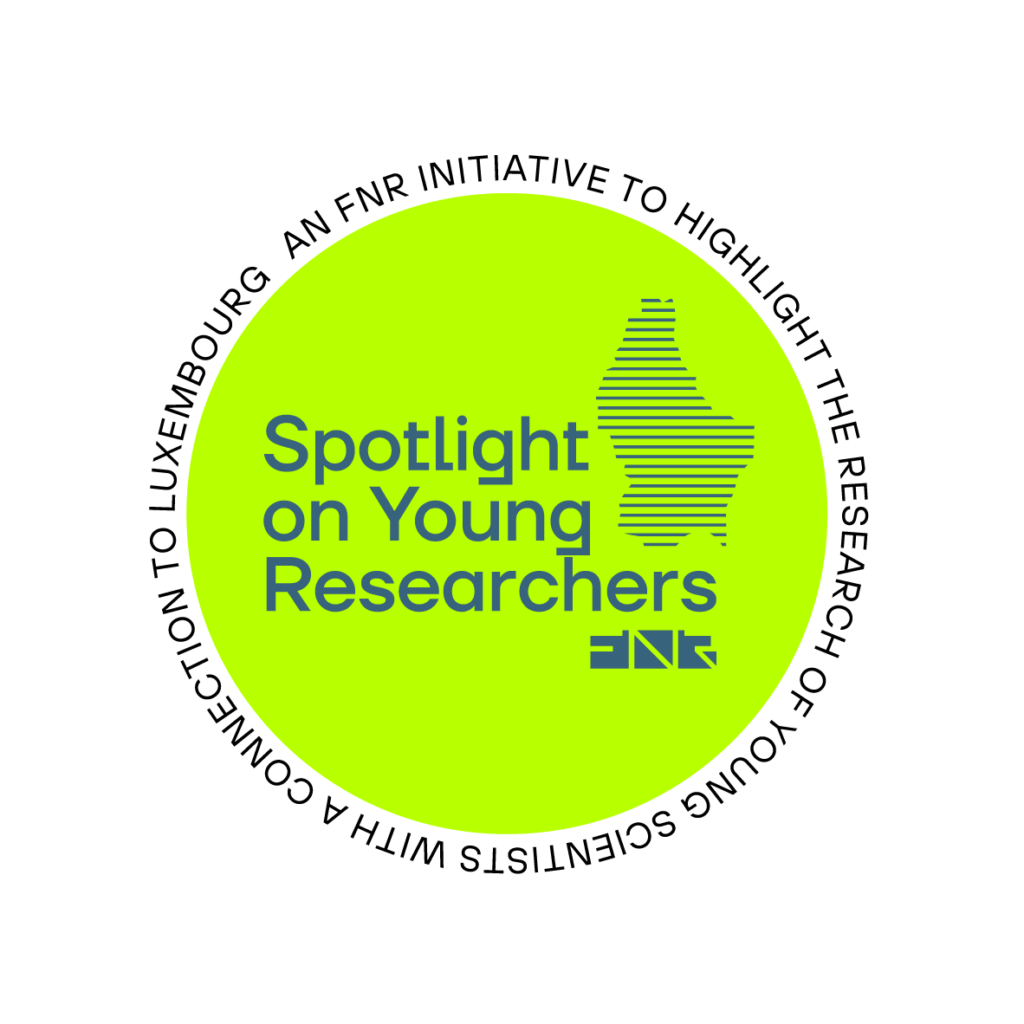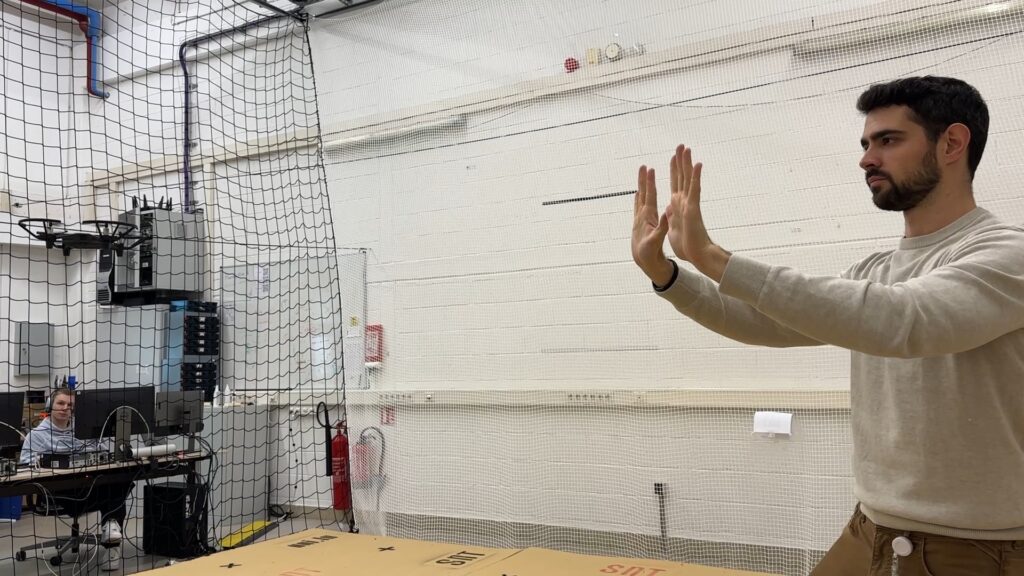BACK TO RESEARCH WITH IMPACT: FNR HIGHLIGHTS
The use of robots is rising, both in industry and in homes. This is made possible by scientists leveraging artificial intelligence to enhance robots’ situational awareness, allowing them to safely understand and reason about their environment. We delve into an example of the science behind autonomous robots.

From medicine, education, industry, entertainment, agriculture, to transportation and security, robots are found in many aspects of our lives. They perform precise tasks, mostly based in an understanding and interaction with their surroundings. Robots autonomously combine different concepts—geometrical, abstract, and relational—accurately and timely, in order to perform complex tasks.
Of course, they lack human-like understanding. Humans understand what objects mean and their purpose – something robots struggle with.
“Artificial intelligence, through computer vision and foundation models, bridges this gap, enabling robots to extract knowledge and make smarter decisions using scene graphs as concise representations for better task execution. ”José Andrés Millán Romera a Robotics and Artificial Intelligence scientist and PhD researcher at the University of Luxembourg’s SnT.
Helping robots understand their environment
Jose Andres works in the Automation and Robotics Group (ARG), which uses artificial intelligence to enhance robots’ situational awareness. This enables the robots to not only perceive but understand their environment. This way, they can develop detailed models of the world, improving both their communication with humans as well as the reasoning behind task performance.


“My key area of focus is identifying human-centric concepts, such as rooms, which enables a more informed decision-making and allows robots to better position themselves and objects in space. Our work has an impact for anyone working with robots, especially those who need to optimize spatial awareness and improve interactions in real-world environments.”
“I apply artificial intelligence to reason over observed objects and extract human-like concepts from various sensors, such as lasers and cameras. These concepts enhance AI’s ability to improve element positioning accuracy and compare different yet similar scenarios.”
Optimising robot navigation
Jose also explores how these concepts can optimise robot navigation, with the goal to enable smoother and more efficient movement. An additional facet of Jose’s research investigating how these concepts facilitate better human-robot interactions through speech, making communication more intuitive.
He also studies how robot behaviour is influenced by these concepts, which paves the way for more adaptable and context-aware responses – and down the line, a more intelligent and user-friendly robotic system.

“A notable success from our team at the Automation and Robotics Group (ARG) is the creation of highly precise semantic maps of indoor environments, enriched by AI, which significantly improve positioning and environmental understanding, advancing both robotics and autonomous systems. ”José Andrés Millán Romera a Robotics and Artificial Intelligence scientist and PhD researcher at the University of Luxembourg’s SnT.

The team succeeded in this state-of-the-art positioning indoors by enabling the detection of abstract human concepts like rooms and buildings using neural networks.
“The robot created an online model, matched with the architectural plan, detecting discrepancies to improve building management. This technique also applies to merging models built by two cooperative robots.”
Jose Andres Millan Romera is a PhD researcher in the field of Robotics and Artificial Intelligence at the SnT of the University of Luxembourg. His PhD is supervised by Jose Luis Sanchez Lopez, who was featured in Spotlight on Young Researchers in 2019.
MORE ABOUT JOSE ANDRES MILLAN ROMERA
Describing his research in one sentence
“I leverage AI to enable robots to extract human-like concepts and reason with them, enhancing their positioning, decision-making, and interaction capabilities.”
On his research, peer to peer
“I employ Graph Neural Networks (GNNs) to populate the higher levels of a scene graph built online by one or more robots. To improve Simultaneous Localization and Mapping (SLAM) performance, I define factors (geometrical constraints) that ensure the constancy of spatial relationships between objects, reducing drift caused by noise in odometry and sensors.”
His goal as a scientist
“My goal is to use robots and AI to enhance human life by making them more autonomous, giving us more time to enjoy what we love. I’m passionate about studying the reasoning process to automate it. Working with my colleagues at the ARG group at SnT provides an ideal environment, driven by their expertise, strong work ethic, and shared motivations for impactful innovation.”
What he loves about science
“Science enables me to tackle meaningful, challenging problems I’m passionate about. I dedicate my time and effort to advancing human knowledge by building on the discoveries of both current and past researchers, through collaboration, conversation, and reading articles—all safeguarded by the peer-review process. By building on these foundations, I focus on translating research into actionable insights that improve people’s lives.”
Mentor with an impact
“Without a doubt, my advisor, José Luis Sánchez López, has been pivotal since selecting me for the AFR. His expertise in robotics, along with his mentorship and invaluable advice during challenging times, has been crucial in guiding me toward success in my research journey. His ability to challenge my thinking and push boundaries has helped me embrace new perspectives and tackle problems in innovative ways.”
Why he chose Luxembourg for his research
“Luxembourg offers an unparalleled research environment, with exceptional expertise, funding opportunities, state-of-the-art equipment and facilities, and a vibrant community. The motivating atmosphere, combined with a strong emphasis on entrepreneurship and mentorship, makes it an incredibly appealing place for both personal and professional growth.”
Where he sees himself in 5 years
“I am committed to pursuing research throughout my professional life, whether in academia or private research centers. While I’m unsure of the exact path, I know this PhD is the crucial bridge to my future, and my connection with the University of Luxembourg will foster lasting collaborations for years.”
Related highlights
Spotlight on Young Researchers: Cancer in older people & the need for a tailored approach
Cancer in adults aged 65+ is increasing, raising pressure on healthcare systems worldwide, creating economic and social burdens for families…
Read more
Spotlight on Young Researchers: A behavioural science approach to financial misconduct
The rapidly evolving risk landscape financial institutions navigate has brought uncertainty and a risk, making them vulnerable to misconduct and…
Read more
Spotlight on Young Researchers: Adapting Earth technologies to function on the Moon
Over 50 years after the first Moon landing, interest is growing in returning. What was the case in the 1960s…
Read more
Spotlight on Young Researchers: Towards fair health for all
Access to essential health services is considered normal in high-income countries, while they are out of reach for many in…
Read more
Spotlight on Young Researchers: Improving protein folding prediction with statistics
Proteins are the building blocks of life: they play an important role in metabolism, immune defence and DNA replication. Their…
Read more
Spotlight on Young Researchers: Building AI tools to help fight disease
AI developments have led to improvements in disease research by enabling new approaches in the study of genes, molecules and…
Read more